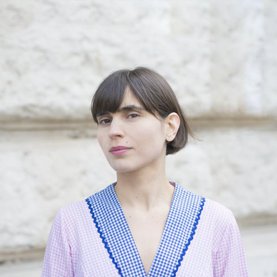ADS12: Room-spring
Jump to
In 2025/26, ADS12: Room-spring treats the home as a spring: source, coil, and seasonal surge, where bodies can shed, re-calibrate, and “flower” through Telepeautic Living: attunement at a distance carried by scent, heat, voice, breath and information, choreographing spring-tendril dynamics.
Tutors: Benjamin Reynolds & Valle Medina
Presence is felt rather than seen: programmable atmospheres replace images; timed olfactory chords, dark-listening fields, and thermal gradients invite risk and repair without clinic or crowd.
Materials sprout, skins molt and fixtures listen (via sweat, breath, pulse). The home becomes a site of resistance for racialised, under-represented, and healing bodies: sanctuary-laboratory that renews itself and the inhabitant via cleanse, seed, ferment or rest, linking solitary practice to networked solidarities so healing can travel across distance and return amplified.
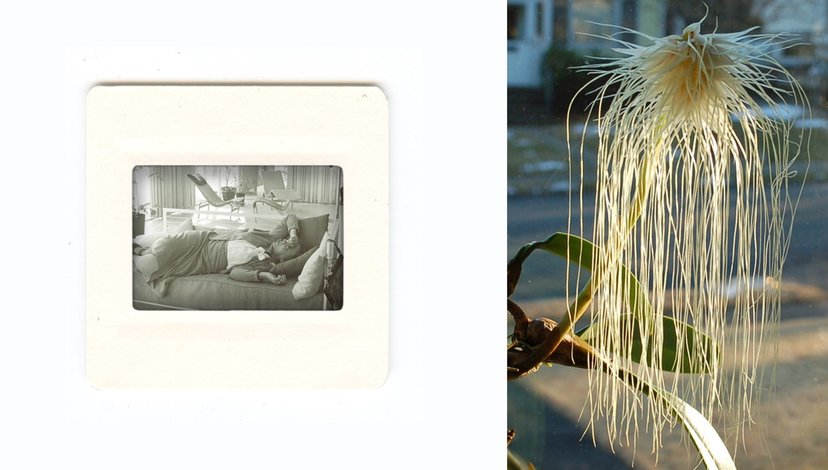
Left: Edith Farnsworth overheating in the Farnsworth House (1955). Source: tumblr.com; Right: Visual and olfactory attraction of pollinators, Bulbophyllum Medusae orchid. Source: garden.org
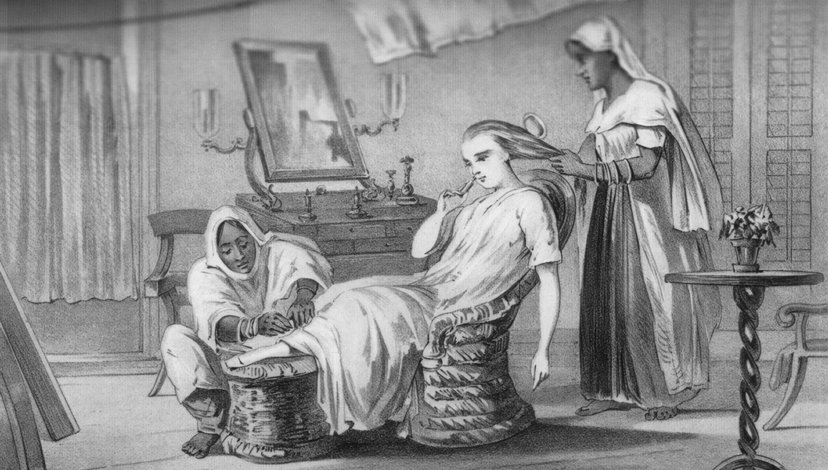
A depiction of Anglo-Indian colonial domestic life. George Francklin Atkinson, Mrs Chutney, the Magistrate’s Wife (1859). Source: Atkinson, 1859
Telepeautic Living
Telepeautic ("tele-" meaning at a distance, and "-peautic" meaning to attend to) suggests a mode of healing, restoration, or intimate care that transcends the need for physical closeness. This concept proposes a form of communal, sensory existence where the Self dissolves into the collective experience and acknowledges that our sense of connection in the modern world can be as potent when it's intangible, distant, and unanchored.
By engaging primarily with our marginalised olfactory and auditory senses over the photic, telepeautic spaces evoke a mode of perception where presence is felt rather than seen, becoming both a refuge and a place for risk-taking with our own bodies. In the absence of clear visual cues we are encouraged to immerse ourselves in an open-ended interaction with the environment, forcing the body and mind to adapt, improvise, and provoke new understandings of Self and social practices.

“Pastoral Complex” recreates a walk along a 2,250 m sub-alpine contour, where oxygen is 14.3%. The space lowers oxygen to explore medical climatology: going to places to feel better. La Becque, Canton Vaud, Switzerland. Source: palace.studio (Pa.LaC.E)
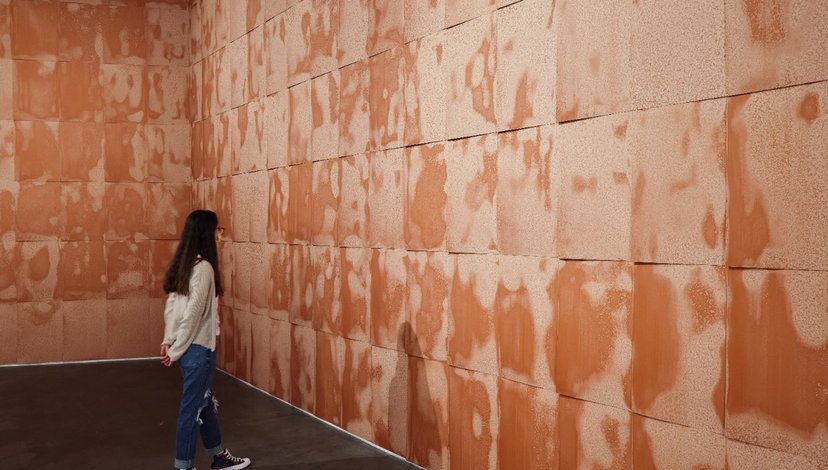
Ed Ruscha, Chocolate Room (1970; reprised 1995). Walls lined with Nestlé chocolate paste screenprint on paper. Source: oklahomacontemporary.org
Shedding
As clinical authority is decentralising, the home is becoming a stronghold of embodied experimentation: a primary site of medical autonomy and risk. Unregulated medical exploration via improvised AI diagnostics is reshaping our intimate and diagnostic selves, marking the rise of a post-clinical condition: a state in which formal healthcare is bypassed in favour of other distributed, unsupervised possibilities.
From 17th-century colonial bath therapies to queer self/companion-administered hormone use, the 'domestic' has long housed unofficial medicine. Today, that legacy escalates: we now self-inject, track, modulate hormonal flows, seek AI guidance, and perform somatic recalibrations within our bedrooms, bathrooms and kitchens.
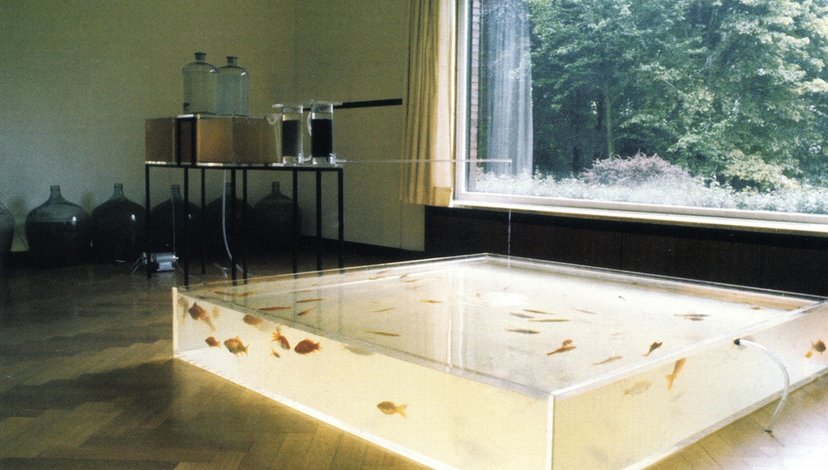
Rhine river water pumped into the gallery, filtered through tanks and then circulated into an aquarium with live fish. Hans Haacke, Rhinewater Purification Plant (1972). Source: Flickr
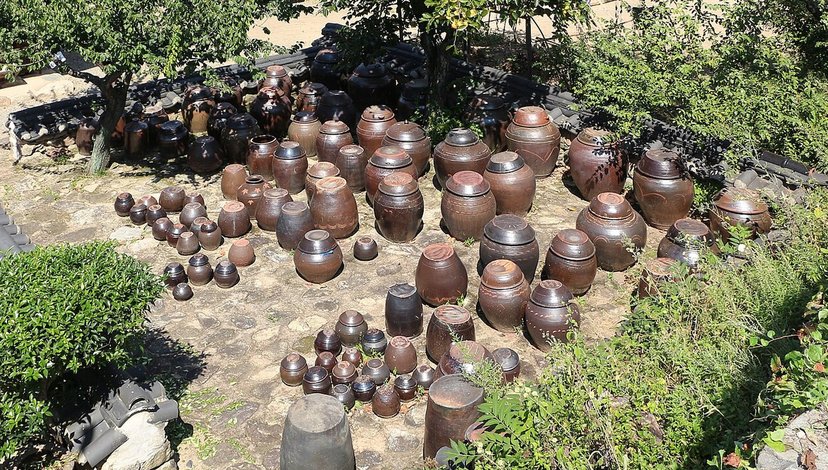
Onggi jars in South Korea fermenting kimchi, soy sauce, and pastes. Source: Wikipedia
We will work with those seeking support through digital covigilance perform acts of medical amateurism in full view of the algorithmic gaze; the enhanced but exposed body becomes the site of resistance and observance. Through an expose of several anonymised rooms, Room-spring examines the architectural and political convergences when homes become amalgams where soothing and shedding coexist in a state of isolated autonomy. As the domestic reshapes the racialised, queer, and burnt-out body, Room-spring proposes a framework for understanding unofficial medicine, spatial risk, and the fluctuating thresholds of algorithmic selfhood.

Artist becomes a human Alexa, remotely controlling homes to probe intimacy and surveillance. Lauren McCarthy, LAUREN (2017). Source: get-lauren.net
Teaching Methods and Media
Home-spring is an experimental studio working across our senses, space, and intimate resistance.
Through real life interactions, material experimentation and digital layering, members are invited to build architectures that touch, listen and exhale.
We embrace experimental media such as sound, smell, sensory devices, video, animation, material fragments, texts written in intersectional genres, drawings and ritualistic spatial acts.
Material investigations may include (but are not limited to) casting, glass, metal, textile, and electronics, supporting projects that cross between physical matter and the digital.
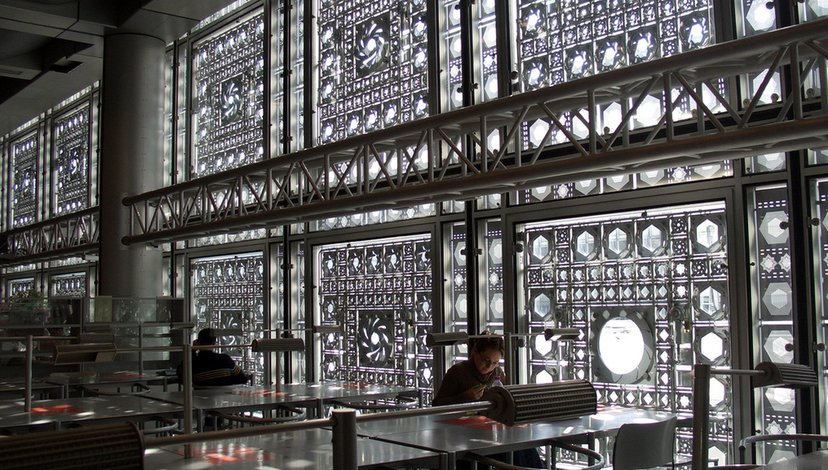
Institut du Monde Arabe, Paris (Jean Nouvel, 1987). Façade with mechanical mashrabiyas regulating light, merging high-tech design and Arabic geometry. Source: Wikipedia
Studio Structure
Each term culminates in a series of spatial works across scales developed through deep personal inquiry.
Term 1 focuses on research and sensory calibration that will culminate in a mini-project; Term 2 introduces architectural propositions through material experimentation; Term 3 consolidates this into a building that is collective and bodily, public and intimate, experimental and built.
Teaching Day: We will meet each Thursday.
Further information available on the micro-site: https://roomspring.ho.ldin.gs/
Live Project/Field Trip:
We will visit China to collaborate with artisans on a contemporary reimagining of the 碑亭 (bēitíng). We will sustain endangered crafts such as papermaking to create a resonant structure.
Tutors:
Pa.LaC.E
https://palace.studio/
@pa.lac.e
Benjamin Reynolds is the founder of Pa.LaC.E, a practice based between London and Basel. He convenes High Holdings (ADS12) at the Royal College of Art, a framework to examine the gradual estrangement of the world via colossal pools of information.
Benjamin Reynolds founded Pa.LaC.E, a practice that conceives of environments and phenomena that are built and sometimes virtual. More recently their work explores homes as no longer places of rest, but as frontlines of self-experimentation, collaborative estrangement and post-institutional care.
Reynolds received a diploma with honours from the Architectural Association, London and was an art fellow at the Van Eyck Academie in Maastricht.
Reynolds has been a principal artist-in-residence at La Becque (CH), the OMI International Center for The Arts in New York (US), the Andreas Züst Library, Oberegg (CH) and has developed work with institutions such as the Koneen Säätiö Foundation (FI) and the Danish Arts Foundation (DK).
Reynolds won the 50th annual Shinkenchiku/Central Glass Award in Tokyo, among other international prizes. Their work has been previously shown at the ICA (UK), Van Abbemuseum (NL), the Centre of Contemporary Culture of Barcelona (CCCB), the Boston Centre for the Arts (US), Basis voor Actuele Kunst – BAK (The Netherlands) and the Architecture Foundation London. Their works have been published in Sternberg Press (DE), Texte Zur Kunst (DE), e-Flux Journal (US), Ecocore (UK) and Volume (NL) and are part of esteemed private collections such as the Permanent Collection of the Metropolitan Museum of Art in New York. They have delivered talks at Columbia University in New York, ETH Zürich D-ARCH, UdK Berlin, the Venice Biennale and the Architectural Association in London.
Pa.LaC.E’s first major monograph 'Paris Hermitage', and their collection of architectural images subjected to an atmosphere 'Zenith Boil', are both books published with Cooperative Editions (New York). Prior to convening High Holdings at the Royal College of Art, London, Reynolds led a diploma class at the Architectural Association, London.
Valle Medina's work is formed between lyrical substances and psychic limits. Her recent interests are the reinvention of contemporary life-rhythms and the effects on the social and the body.
She is the founder of Pa.LaC.E a practice based between London and Basel that conceives of environments and phenomena that are built and sometimes virtual.
